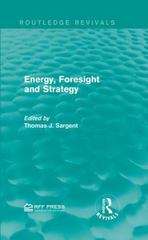Thank you for your help.
d. (9 marks) Write the restriction over the parameters in equation (5) that the regres- sion equations are identical for male and female employees, that is. the mean log-wage of female employees with any given values of S, A and T equals the mean log-wage of male employees with the same values of S, A and T. Provide an expression for the null hypothesis (Ho) of the mentioned restriction and for the alternative (Hi). The re- stricted OLS estimation provides RSS = 93.1805. Use this information, together with the information provided in the problem formulation, to calculate the test statistic, in- dicating which is its approximate distribution under the null hypothesis. Establish a decision rule, using a significance level of 5%, and the corresponding conclusion on the inference provided by the test. The hypotheses areb. (9 marks) Write the expression (or formula) for the marginal effect of A over In W for male employees in terms of the unknown parameters, implied by regression equa- tion (5). Repeat the exercise for female employees. Provide the null hypothesis that the marginal effect of A on In W for male employees is equal to the marginal effect of A on In W for female employees. Provide also the expression for the alternative hy- pothesis. Give the equation for the restricted regression implied by Ho. The restricted OLS estimation provides RSS = 81.7242. Use this information, together with the information provided in the problem formulation, to calculate the test statistic, in- dicating which is its approximate distribution under the null hypothesis. Establish a decision rule, using a significance level of 5%, and the corresponding conclusion on the inference provided by the test.QUESTION 2 (33 marks): You are conducting an econometric investigation into the hourly wage rates of male and female employees. Your particular interest is in comparing the determinants of wage rates for female and male workers. The sample data consist of a random sample of observations on 526 paid employees, 252 of whom are females and 274 of whom are males. The sample data provide observations on the following variables: W = hourly wage rate, measured in dollars per hour S = number of years of formal education completed, in years A = age, in years; T = firm tenure of employee, in years;. F 1 if employee is female and =0 if employee is male The following model is proposed In W = B, +8,8+ By4+B,A'+ B,T + B.(S . T) + B,F+ B.(F . ) (5) +8,(F . A) + Boo(F . A' ) + An ( F . T) + BB( F . S . T) + U, where the Greek letters denote unknown parameters and U is an error term. It is as- sumed that all the classic assumptions of the multiple regression model hold, including homoskedasticity. The observed sample provides the following estimates (standard errors of each estimate in parenthesis), In W = -0.5667 + 0.05937 5 + 0.07980 A - 0.00093 4- - 0.01057 T (6) (0.2485] (001104) (0.01216) (0.01015) (0.01124) +0.00227 (8 . 7) + 0.03593 F + 0.01684 (F . 8) - 0.03847 (F . A) (0 00087) (0.01684) (0.01715) +0.000422(F . A-) + 0.01850(F . T) - 0.002107( F . S . T). (0.000219) (0.02652) (0.002187) The corresponding residual sum of squares ( RSS) and the total sum of squares ( SST) of the n = 526 observations are RSS = ME Of = 80.57 and SST = > (In W, - In W)' = 148.33. a. (6 marks) Use the estimation results to compute the OLS estimates of the slope coef- ficients of the regressors S, A and T when only the 274 observations corresponding to male employees are used. Repeat the exercise when only the 252 observations cor- responding to female employees are used









